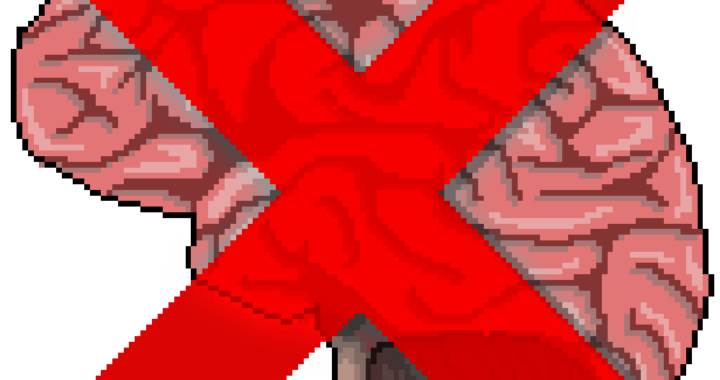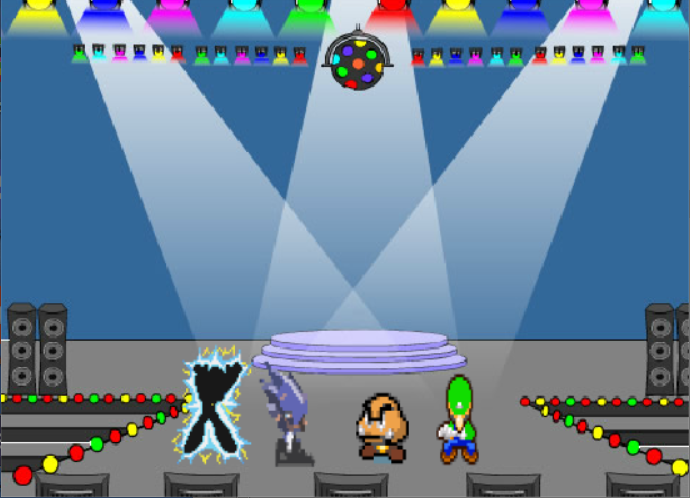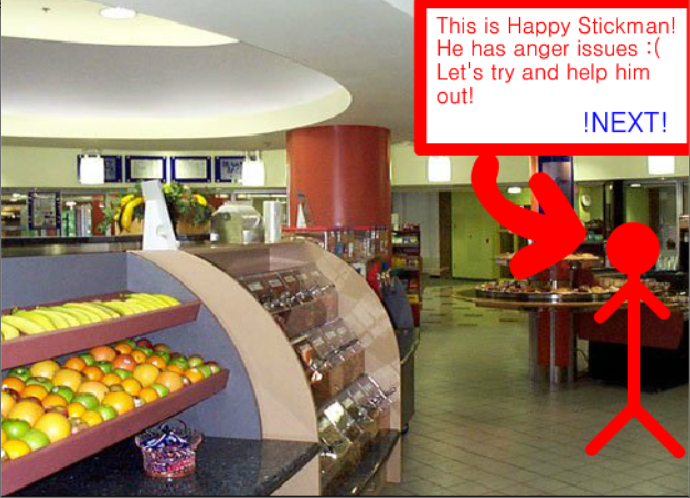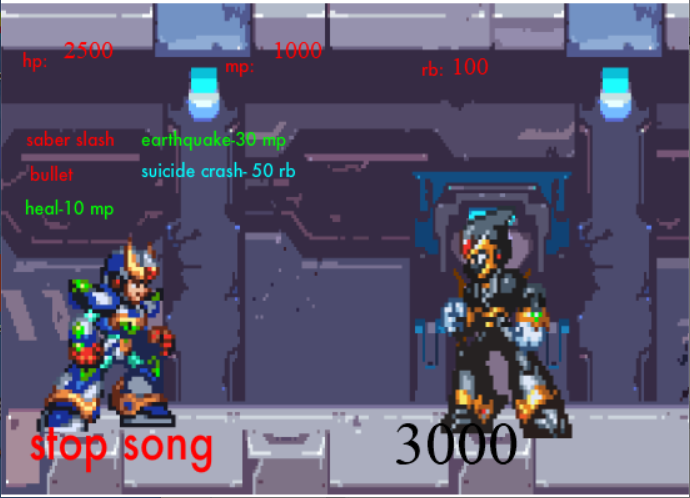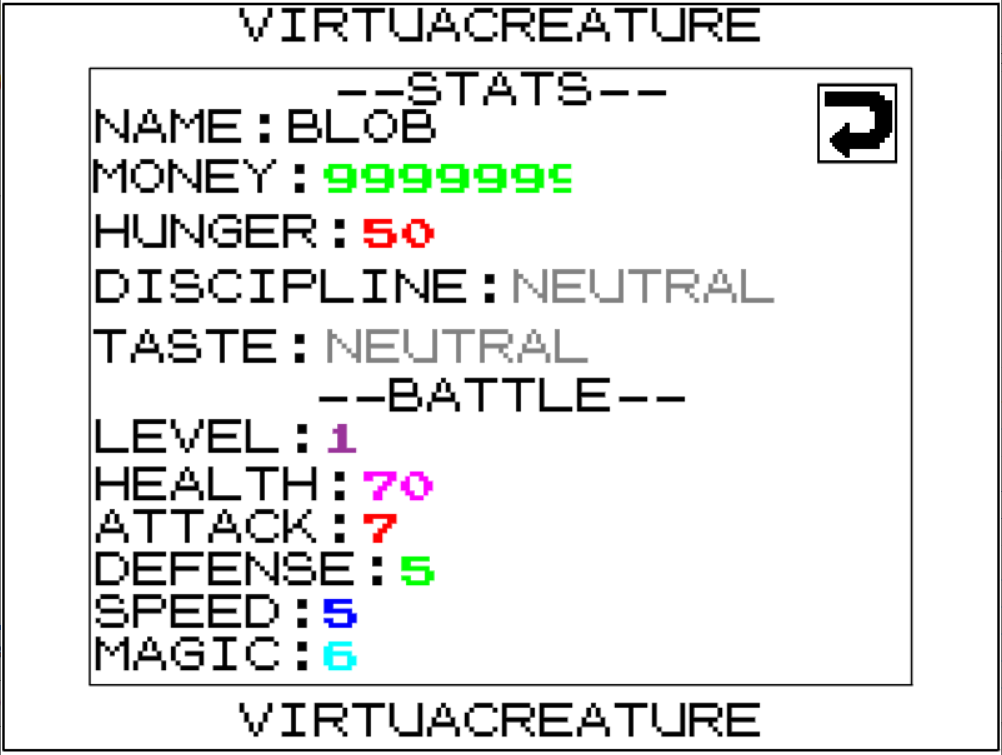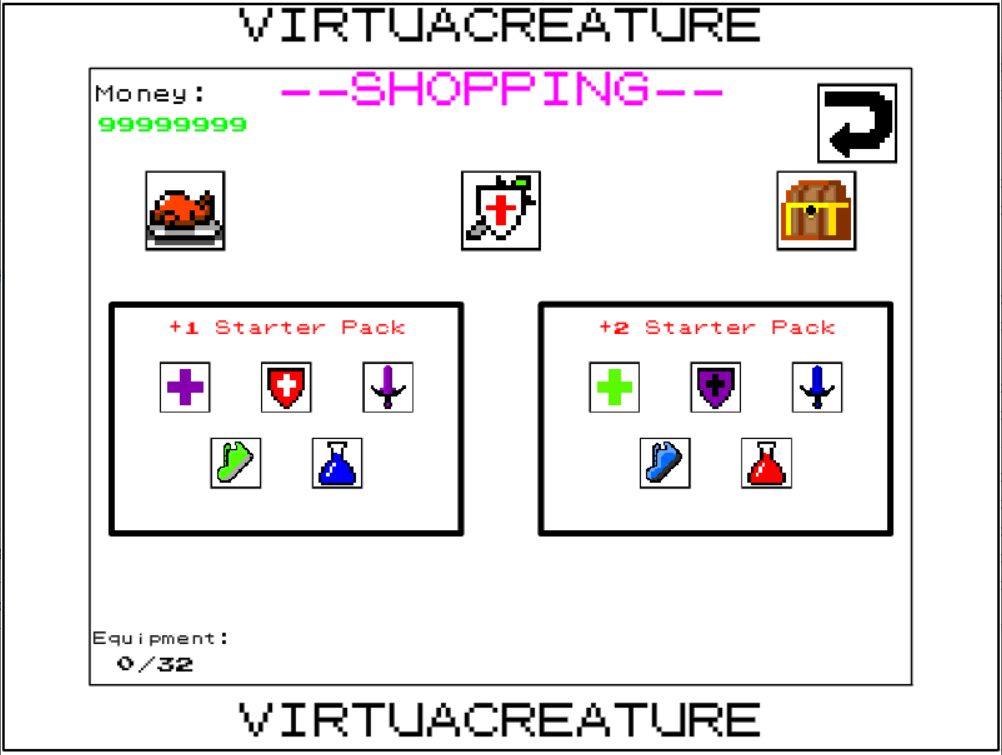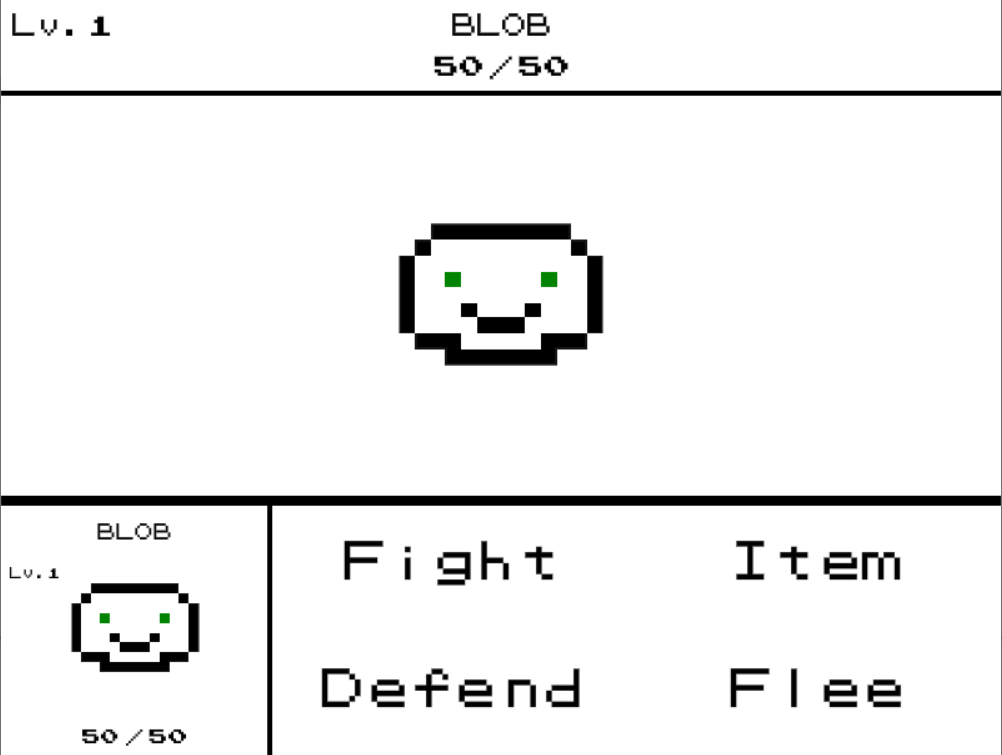Flash History: 2011 – 2012
I remember the very first iteration of the ZIP website was hosted on someone else’s domain, just so I could practice HTML. I was deeply engrossed with Newgrounds at the time, and was trying my hand at creating sprite movies and simple RPGs (none of which were good, for the record). So, naturally my first website was dedicated to hosting those as mirrors to their NG uploads. Eventually I was gifted the domain we’ve used since, and I then expanded the site to hosting other people’s content as well, (usually) with permission. Since I had no idea how to design a website competently, this looked like a bizarro 90’s alternative to popular portals at the time, with absolutely no CSS or JS to be seen anywhere; just basic hyperlinks, images and SWF embeds as far as you could click. Unfortunately there are no archives from this entire period due to poor site mapping.
Luckily though, I did archive the majority of the content itself!
As you can see, painfully amateur, but I was learning nonetheless. One of them won an award on NG for being terrible, so I was gifted in that regard. Jokes aside I owe a lot to Flash, as do many people. Due to the way the web has evolved, there might not ever be a time again where one tool can so powerfully dominate the entire sphere of internet content creation, and that made it in retrospect a really good time to learn.
Relative Quiet: 2013 – 2014
By the end of 2012, it was clear Flash was on its way out, with iOS looming as an ever-growing presence, demanding websites shift and conform to its standards. I held on for a long time (I’ll get into that later), but it was clear I needed to make changes too.
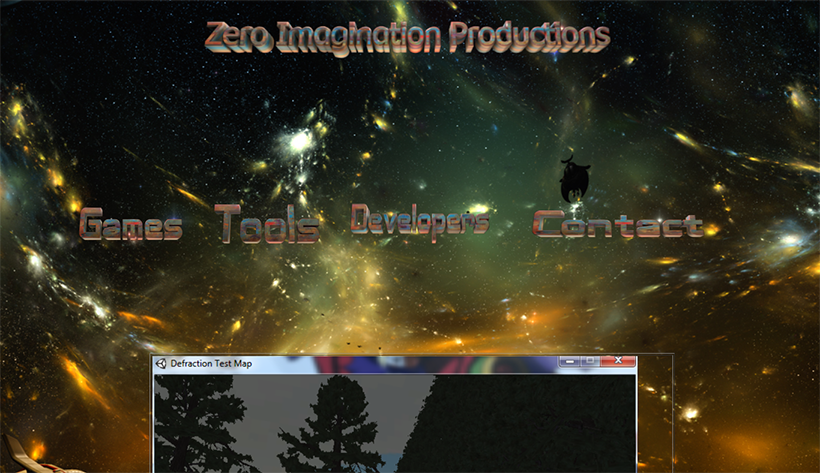
The new website was… Lacking. I still did not have a strong grasp of web design (nor do I now, thank you WordPress for saving me) and there was barely any content to display after casting all my previous projects to the dustbin. I was attempting to learn Unity, which did not pan out, and there were even a few larger Flash projects, starting up and winding down every few months, never to be revealed. So, unfortunately the site never expanded or meaningfully changed beyond this point. The ridiculous 3D logo headers and massive, probably stolen background image are nice touches though. This iteration took a good few seconds to load.
Romhacks: 2015 – 2016
Another interest I started to explore more keenly was romhacking, particularly the 3rd generation of Pokémon games which at this point had plenty of developed tools, making it attractive for someone like me, who’s early days were spent taking assets from things I liked and trying to reshape them into fanfiction-like alternate universes where Megaman swore and was a poorly planned RPG. The opportunity to take a game so developed already and sculpt a new premise via scripting was exciting.
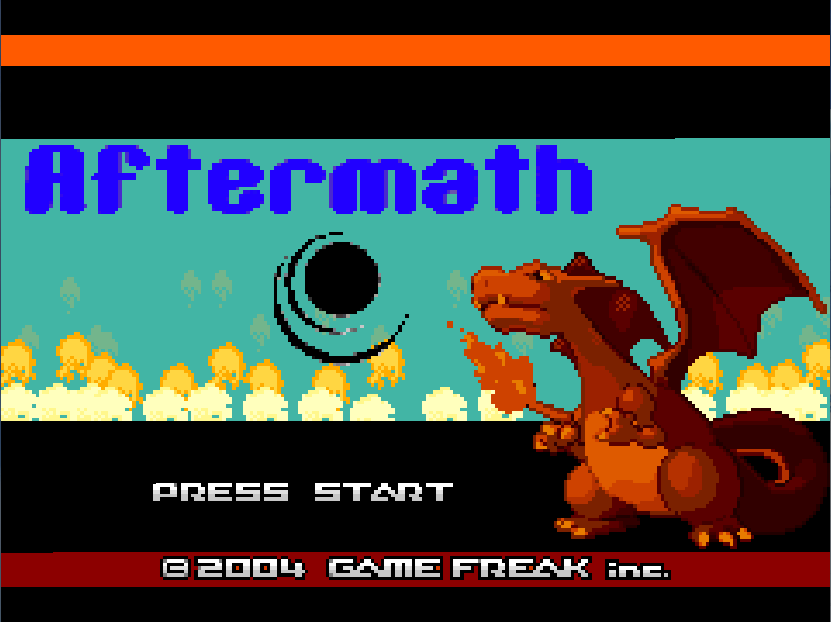
A FireRed hack that consisted of an original story in a severely modified Kanto, which played into the odd dialogue turned internet-legend about a “great war” was honestly not a terrible idea, but the execution was off-putting in a lot of ways. It was released in an unfinished state and required a custom launcher, which would automatically download new patches based on a rudimentary version control system hosted on the website. I used this to quickly release updates as I made changes, as well as temporary distribution events like giveaways. This type of rapid unfinished release schedule is actually similar to the way some of these projects function now, with commits to the project’s git repo triggering an automatic build & release of a new patch. I will not claim to be some forward-thinking genius, github existed before I knew how to code, but I still think it’s cool! However, the community did not enjoy this format, with several interested observers rightfully pointing out that requiring custom software to play an unfinished mod was not a good decision.
This iteration of the website was also not preserved well, but it looked strikingly similar to the current format, running on WordPress with posts serving as changelogs for patches. The launcher even pulled these posts from an RSS feed and displayed them directly. Neat!
There was also concern about the project’s quality itself, which started off equally haphazard and amateur as those early years. It did improve, but first impressions matter. It was in reality my first time attempting to plan and balance content to make a coherent game, not just a micro assembly of setpieces that Flash games typically were. I continued to work away at this for over 6 months before eventually restarting development, unsatisfied with the overall direction of the hack. While this second version actually appeared higher in quality judging from the early work I preserved, it did not last, and this era too ended in silence.
VirtuaCreature: 2016 – 2018
It's almost disorienting to remember how long VirtuaCreature consumed our lives. I distinctly remember making a Facebook post in early 2016, asking if any of my friends knew how to make pixel art. I attached some screenshots of 2nd generation Pokémon, saying I wanted to make something with a “gameboy aesthetic”. Eventually I clicked with someone that more people might recognize called Goosekhan, a very talented Smash Bros. Melee player who at the time happened to share a few classes with me. I would still have considered him a friend then, but not a close one. This quickly changed as we would spend large chunks of our mutual time scrawling ideas down on paper in-between assignments and discussing progress. I would handle the programming and a majority of the design choices, and he would create assets and give input on my decisions. There was a fervor that seems familiar when reading accounts of other small teams or indies that first get serious about development.
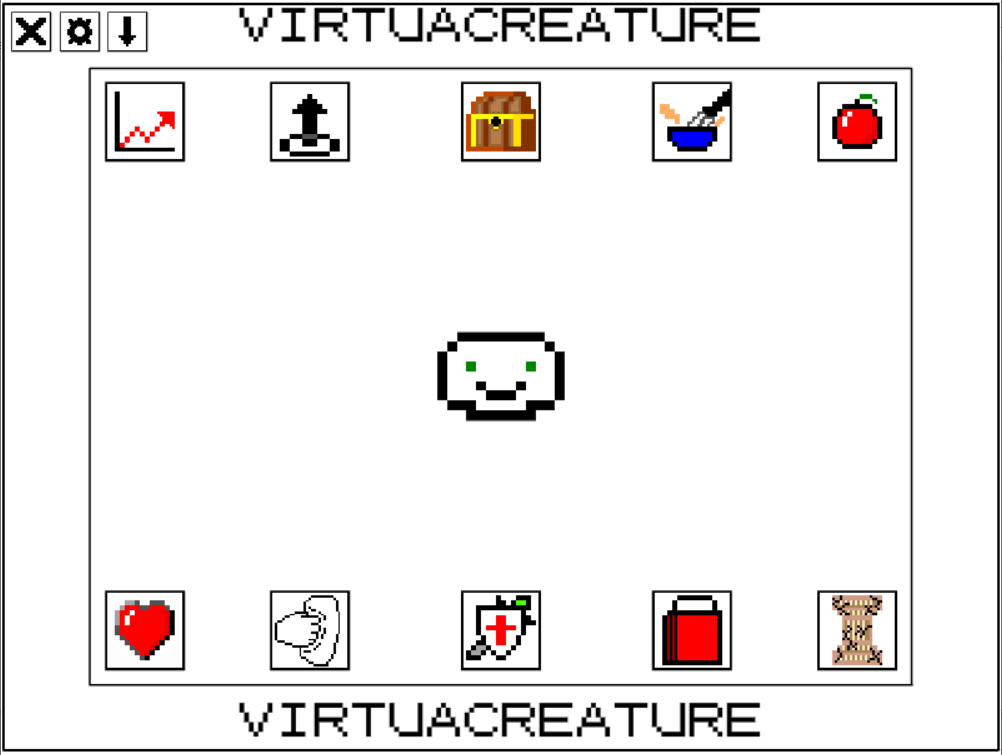
I chose to use Flash again since it was something I had experience with, simply packaging it in a Windows container rather than targeting browsers. This alongside my lack of PC development knowledge created some strange conditions even for that time, with a 30fps 480p window being the targeted specs, and a lack of any proper graphical or audio settings. However, progress was happening! We were both still completely unprofessional of course, and had no idea how to plan tangible goals or work with asset or code pipelines. Long periods of burnout or stalemates would hinder said progress frequently, and our online presence could be summed up in one sentence: announce a release date, miss the date, repeat. We started when Steam Greenlight was still around and failed to meet the conditions to submit before that entire process disappeared and was replaced. I don’t remember exactly how this felt, but we soldiered on regardless.
Goosekhan:
My initiation into this whole whirlwind that is ZIP really started in history class. I have a very vivid memory of us doing absolutely nothing since the student count had been halved earlier in the year, and Avery asks “Hey, do you want to make a game?” I really did not know what that would entail at the time but all I knew was I was down.
During class we would discuss the game, evolution trees, gameplay loops and the like, after school I’d make assets and relay them back to him on Facebook or Discord. It was very loose and haphazard initially but as we would have our back and forths with me creating an asset, being given feedback and tweaking it, something resembling a structure or process would develop.
I think one of the most fulfilling parts about working on projects with ZIP was learning to create our own structures, protocol and processes. Even something as simple as being sent a game design doc, asking me to read over and make changes felt productive and involved. It was novel to me at the time since all of our previous endeavors like with the romhack were so lacking in direction and concrete steps that the projects (or at least the ones that hinged on my involvement) fell through.
To me it felt like a good chunk of the initial work was us choosing to put our creative selves first and really just trying to navigate as artists how to actually flesh out our ideas. We both had to learn how to manage our expectations and develop our skill sets. Because we were young and inexperienced, our ideas often could not match the scale or quality of the ideas we initially put forth. I had to play around the limits of the canvas size, my own artistic ability, and simply the lack of experience in life to create creatures I thought were interesting and coherent. I think through this process I learned a lot about how artists make compromises in ways that don’t impede their creative flow. My canvas size and pixel limit is not a hard cap, but something I have to play around, truly get creative and solve the problem of creating a complex creature in a 64x96 pixel boundary.
By the end of 2016 we had a functional prototype of sorts, albeit with only aesthetic and side mechanics functional, the core gameplay was still missing. I had contacted a composer on Newgrounds and had a variety of their tracks integrated. Unfortunately, at this point it completely stalled, with 2017 seeing almost no meaningful progress. I remember attempting to work on an earlier version of a battle system, but this was a bigger roadblock than I had ever encountered, and my admittingly still meager skills did not feel up to task. Asset production and progress on additional goals like a trailer also slowed down as life got more demanding. For a while it felt like this would be another abandoned project; I was mythologizing it in my head, that if only we could finish this one game, everything would be better.
In 2018 something finally aligned. We both found ourselves temporarily with more time, and I was sick of staring at this prototype day after day and feeling stuck. I slashed the core battling system down to what was in retrospect worryingly simplistic, but I started to burn through planned goals quickly again, and remaining assets were being finished at a speed demonstrating Goose’s increasing skills after over a year of solid practice. In the interim I had picked up video editing, and could now produce a decent trailer. We held beta testing sessions with people close to us, and one particular friend put in considerable hours throwing himself at my builds every possible way to find bugs. We set a date and moved it forward because we were ready earlier, something that I would not usually consider a good idea. Our scrappy, barebones game was finished.
Of course, it did not change our lives, because how often does that really happen? It was released to alright reviews, and made an alright amount of money considering the near $0 budget. Criticisms were mainly aimed at the lack of tutorials (there were basically none) and the now threadbare battle system that was less complex than even most NES RPGs. I worked on 2 updates that came soon after, mostly fixing bugs and improving a few minor things. We announced that we were done, and wanted to do something else, which garnered some negativity from Steam reviewers who said they liked some of it - the aesthetics, the music, the tamagotchi mechanics - but wanted to see it fleshed out. At some point prior, I wanted to release it in early access and do just that, but the reputation of that model was firmly in the gutter around that time, and we were both tired of looking at this game. New projects were started but mostly stayed in the concept stages, never materializing. Sales slowed and then stopped. For a few months, things sat still.
The Roadmap: 2019 – 2020
I became frustrated with the state of VC; the core loop was frankly quite boring, and many ancillary mechanics surrounding it were broken or similarly undercooked, meant to play a larger role in systems that didn't exist. I slipped back into working on it, finding that without the pressure of the never-ending release window previous ideas now felt doable. Plans were drafted for 4 major updates on a quarterly schedule, first addressing major issues such as the broken time tracking and overbearing audio mix, then filling out mechanics in stages, with the largest being at the end: the real battle system, the one I discarded to pull the game out of development hell.
There is actually not much to comment on from this time, mostly because we delivered on the majority of what we said. Some ideas were cut or trimmed down, and that battle system took 3 months longer than anticipated, but by 2020 the game had increased in scope and now felt closer to what we had imagined it as 4 years ago.
It even had an ending, a surprise final encounter that we are still very proud of. Since our original composer had seemingly disappeared off the internet, I brought in another friend to create new tracks for the boss sequence, a complex, chaotic tracker composition that sounded unlike the casual, upbeat vibes of the regular gameplay.
Sales exploded during the announcement of the updates, aligning with a deep discount courtesy of the holiday sale, and there was a smaller spike after the release of the final update. Feedback was positive. Overall it felt like we had accomplished something meaningful, and the game had finally been cooked to a reasonable state. During the first months of 2020 we once again began drafting concepts for a new project, and even briefly investigated setting up an office space, somewhere for us to focus and bring more people into the fold. There was a lot of optimism going around, some of it misplaced as we were still much smaller than we felt.
COVID & 2.0: 2020 – 2021
Nobody could have exactly predicted the following year. Very quickly, the world shuttered, obligations were canceled and we found ourselves locked inside without much to do. Being supported by surprisingly weighty stimulus plans (we’re not American), we both agreed that there was a window of opportunity here to make serious headway on a project. How long could it possibly last, though? At the time, even a full year seemed unrealistic. So a new project was deemed unfitting for our full-time focus; we wanted something we could finish quickly. What we decided on was a large overhaul of VirtuaCreature: the plan was to significantly alter every aspect of the game, from the engine it was on to each mechanic, small or large. Everything was either being expanded or refined, and complex new problems needed to be tackled including mobile ports (a common comment we received was that the game would work well on those platforms), and an online backend that included multiplayer, an account system and various supporting mechanics like an event schedule; these were things we had never tried to do before on any scale, and our workflow had to change if we were going to succeed. We set up a Jira and a proper repo, broke down every important task into as many chunks as we could, held weekly or bi-weekly calls to dole out and schedule progress. Within a few months, we had the game running on a much newer version of the runtime (ported up from AS2 to AS3/AIR) and many improvements accompanying it already.
It was around this time in mid-2020 the question of the monetization model came into focus. I was not very keen on the idea of splitting monetization methods between platforms, and while the original version did enjoy those aforementioned sales spikes, the amount of engagement with the game itself was fairly low. Mobile games are almost always free with additional monetization, and there are many stories of successful ones floating around the web. We decided on a Free-to-Play model and a new release rather than an update, hoping for a large influx of players that would if not immediately, eventually lead to steady revenue. Progression would be slowed to encourage purchases from a microtransaction-based shop system, selling revives, XP boosts, storage expansions and various cosmetics, via a premium currency that (of course) would be sold in confusing and uneven distributions, making it difficult to pinpoint the real value of your purchase. I will not mince words, this was a terrible idea; not only does it financially make little sense as a small developer without a large advertising budget, it’s also morally bankrupt, as almost every version of the model is designed to encourage impulse spending. We didn’t go as far as gambling mechanics, but does it really matter? It started to feel wrong even as we implemented it, but I was so focused on attempting to capitalize on the moment I pushed past it. We had our model layed out, and the ports moved forward.
Steam’s first “Next Fest” sprouted wings around this time, and we opted to join, preparing a demo build featuring the core single-player loops and a sample of the PvP gameplay. We held a livestream, which got some views but not much engagement, although getting to play against a few people was a highlight. We received a good handful of wishlists for our trouble, and felt cautiously optimistic heading into the new year. We were targeting Q1 2021, but that slipped to April as we took a bit more time to make sure everything functioned as well as we could plan for. Very soon, the release date was upon us.
Final Release: 2021 – 2023
What followed the release was a long period of silence. Not a lot of revenue, and not a lot of activity; people played it, but usually stopped rather quickly. We quickly rolled out some updates trying to improve this, fixing some stability issues, adding new content, music and improving tutorials, but it still did little to resolve the situation, and now we had a small mountain of expenses: The server costs, the engine license (at this point Harman had taken over AIR and started charging yearly), and the advertising money I had set aside was not bringing in enough people to cover the deficit in retention and bills. This was our biggest attempt, but it felt like the smallest payoff.
That more or less leads us to where we are now. Some more updates were along in the pipeline, but our main focus became cutting back to be as sustainable as possible. Servers were reduced to fit the smaller size of the playerbase, the expensive to maintain iOS version was dropped, and our model gradually shifted, first to a single, catch-all premium purchase that gave all benefits at once, and then eventually dropping the F2P model entirely and going back to a standard purchase. Ironically, 2023 was our first year in the green since before we were budgeting, directly due to these changes. Staying small would probably have benefited us.
Lately, we do not feel so attached to this legacy anymore. The name, the projects, and the vision all feel tied to an identity we’ve learnt from and grown apart. So, we’ve decided to leave it behind. We still plan to work together, but ZIP is no longer, and one day everything attached to it will probably disappear, although we plan to keep things up for as long as we can.
Sayonara 🙂

